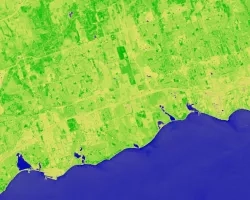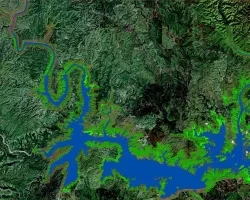Cape hatteras ecological conservation (2024 Spring)
Team: Ella Haugen (Project Lead), Alyson Bergamini, Julian Alcantara
Summary: The National Park Service at Cape Hatteras National Seashore works to protect North Carolina’s Outer Banks where frequent storms bring heavy winds and flooding, leading to overwash events on the main highway, North Carolina Highway 12. Shorelines are susceptible to erosion directly affecting transportation and housing infrastructures. Storm events can disrupt transportation on NC-12 and ferry service from Ocracoke Island to Hatteras Island, leaving inhabitants stranded on Ocracoke Island for indefinite amounts of time. The National Park Service’s current decision-making practices involve mitigating infrastructure damage by enlisting the help of North Carolina’s Department of Transportation and finding ways to relocate this infrastructure, as well as dredging and sediment placement that support beach nourishment efforts. Our NASA DEVELOP team partnered with the National Park Service to explore the use of electro-optical data to delineate shoreline and map coastline change from 2014 to 2024. We used Earth observations collected by Landsat 8 Operational Land Imager, Landsat 9 Operational Land Imager-2, and Sentinel-2 MultiSpectral instrument to support decision-making related to prioritizing strategic planning for transportation corridor adaptations including potential relocation of infrastructure, and beach nourishment efforts. We derived coastline maps by consolidating single date images from each year to derive seasonal composite images for assessing winter and summer coastline seasonal oscillation patterns. The results highlight shoreline loss over the ~10-year study period, and the difference in shoreline inundation in the winter and summer seasons. These observations create a better understanding of storm damage mitigation efforts and help the National Park Service to plans for infrastructure updates.



